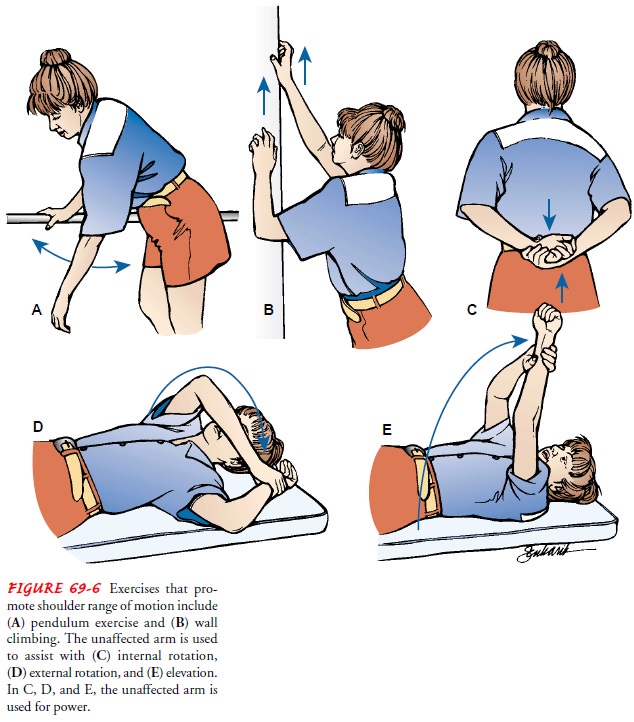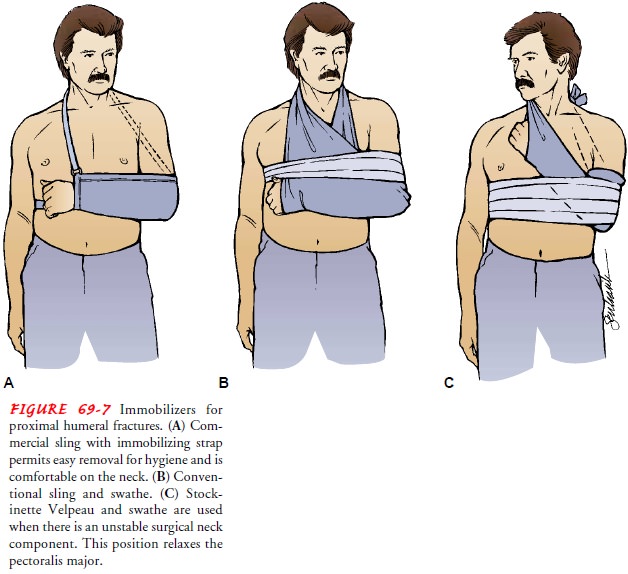Chapter: Medical Surgical Nursing: Management of Patients With Musculoskeletal Trauma
Humeral Neck - Fracture

HUMERAL NECK
Fractures of the proximal humerus may occur through
either the anatomic or the surgical neck of the humerus. The anatomic neck is
located just below the humeral head. The surgical neck is the region below the
tubercles. Impacted fractures of the surgical neck of the humerus are seen most
frequently in older women after a fall on an outstretched arm. These are
essentially non-displaced fractures. Active middle-aged patients who are
injured in a fall may suffer severely displaced humeral neck fractures with
associated rotator cuff damage.
The patient presents with the affected arm hanging limp
at the side and supported by the uninjured hand. Neurovascular assess-ment of
the extremity is essential to evaluate fully the extent of injury and the
possible involvement of the neurovascular bundle (nerves and blood vessels) of
the arm.
Medical Management
Many impacted fractures of the surgical neck of the
humerus are not displaced and do not require reduction. The arm is supported
and immobilized by a sling and swathe that secure the supported arm to the
trunk (Fig. 69-7). A soft pad is placed in the axilla to absorb moisture and
avoid skin breakdown. Limitation of mo-tion and stiffness of the shoulder occur
with disuse. Therefore, pendulum exercises are begun as soon as tolerated by
the patient. (In pendulum or circumduction exercises, the nurse or physical
therapist instructs the patient to lean forward and allow the af-fected arm to
abduct and rotate [see Fig. 69-6].) Early motion of the joint does not displace
the fragments if motion is carried out within the limits imposed by pain.


These fractures require 6 to 10 weeks to heal, and the
patient should avoid vigorous activity (eg, tennis) for an additional 4 weeks.
Residual stiffness, aching, and some limitation of ROM may per-sist for 6 months
or longer.
When a humeral neck fracture is displaced, treatment
consists of closed reduction, open reduction with internal fixation, or
replacement of the humeral head with a prosthesis. In this type of fracture,
exercises are started only after a prescribed period of immobilization.
Related Topics